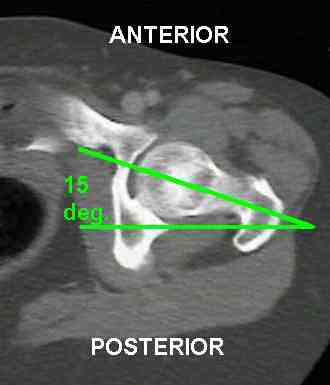Review normal subtalar movement

Effect on foot and knee arthrokinematics when early stance pronation is excessive:

|
| ||||
|---|---|---|---|---|---|
Antetorsion relates the femoral neck's angular orientation to a line that connects the femoral condyles (Hertling & Kessler, 1996, Fig 12-3, p. 286). As such, it describes a bony or structural torsion or twisting of the femoral shaft. 
|
|---|
Compensations (Hertling & Kessler, p.322) must occur when the measures are unequal.